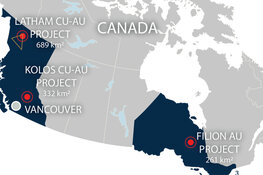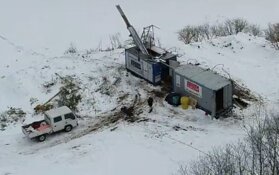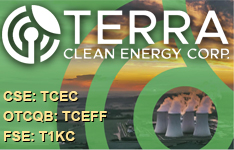Alka Singh: That's a great question because a lot of people think that precious metals (PMs), uranium and base metals are all metals and mining. What they don't understand is that there are different drivers for each sector. The supply and demand determine the price of gold, but the gold price also changes based on the fiat currencies. Gold, silver, platinum and palladium are viewed not only as commodities but also as a store of value. As the demand for precious metals (jewelry and ETFs) increases so does the price of these commodities. But as the precious metals are also a store of value, people consider these as good as cash and their prices increase as the U.S. dollar depreciates.
On the other hand, base metals are driven primarily by global economic activity and, particularly, by growth in the BRIC (Brazil, Russia, India and China) economies. Growth in these countries has a great impact on the base metals. To some degree, they are also driven by currency exchange rates. Because all these commodities are priced in U.S. dollars, they tend to appreciate as the dollar depreciates; however, you'll see precious metals appreciate more than base metals just because they are perceived as a store of value.
Investors realize the dollar is depreciating and wonder if they should just buy copper, nickel, zinc or lead. They're frustrated because the dollar keeps depreciating, and they see gold or silver appreciating while base metal prices remain the same. Part of that is because if the U.S. and other economies are not doing well—no buildings, bridges or hybrid cars being built; the demand for copper, nickel, zinc, lead—all of these base metals—actually goes down or stays flat. As governments keep printing more money, precious metals appreciate faster than the base metals when there is lack of economic growth. So, that's the key difference in the value drivers.
TGR: So, precious metals can be thought of as a currency, whereas base metals are simply raw materials.
AS: You got it, yes.
TGR: Alka, are we in an unusual situation where we see growth in the BRIC countries and pretty much worldwide devaluation of every nation's currencies? Have you seen this in the past where both base and precious metals can appreciate at a distinctive rate?
AS: I'm sure there have been situations like this in the past, but today it's more dramatic because every country is trying to out-print the other. China is keeping its currency low, while the U.S. is printing so much money in an effort to keep the dollar down. All I'm saying is the rate of change is different this time. More countries are depreciating their currencies due to slow economic development, which causes precious metals to go higher than base metals.
Back in 2008 during the financial crisis, when most of the world economies weren't doing well, we saw base metal prices going down every day. Gold prices also declined, but not as much and at a slower rate than the base metals.
TGR: What's your forecast for the PM sector in the coming year? Do you expect continued price appreciation in these commodities?
AS: For 2011, I see gold prices at $1,350 an ounce and silver at $28, which is close to where they're right now, but not a big increase. I'm not using higher-than-current prices because I believe, at some point, we'll see the U.S. economy starting to improve and all this quantitative easing (QE) will end. People have QE2 all priced in. While there is a good chance we'll see more QE, its impact shouldn’t be as great—or the quantitative easing wouldn't be as big—if we see the U.S. economy improving with more job creation. I'm keeping my fingers crossed, but I think gold, silver and other precious metals will stay where they are right now.
TGR: But the precious metals equities can be very profitable at these levels.
AS: Oh, of course. I think gold equities are still discounting $1,100–$1,150 gold, but they are not discounting a $1,400 gold price. Once we go into 2011 and see gold prices even at $1,400, the stocks could still go 20%, 30% higher from there.
TGR: So, you see precious metals stocks growing year-over-year based on earnings, not price appreciation in gold or other PMs.
AS: Yes, that is exactly correct. If gold stays at $1,400, I really think you'll see the margins improving next year even if gold prices don't go higher. Equities will perform because the markets will get used to $1,400 gold and not discount the stocks at $1,100 or $1,150, which is what they're doing right now. So it'll be more earnings and cash-flow growth. I cover only gold and some silver companies; I don't yet cover the platinum group metals (PGMs), which include platinum, palladium, rhodium, iridium, osmium and ruthenium. So what I'm telling you is based solely on gold and silver.
TGR: Given the price stability you're forecasting, what are you looking for in gold and silver mining companies now?
AS: Well, I'm looking for growth. That's what I'm looking for. Having this kind of a gold price and being in this kind of a gold-price environment, I think the market is going to pay for ounces in the ground. Investors are going to pay for development projects that a company can bring online over the next two to three years. I expect companies to come out with new projects to get more growth; that's the way they have to grow. They have to lower their cash costs or, at least, keep them constant, but growth must be imminent. Therefore, I think the focus will be more on growth.
TGR: So, this makes management—good management—even more valuable.
AS: Exactly. It does raise the importance of companies' management teams, because they will decide mergers and acquisitions (M&A) activities. Companies that lack a growth pipeline will have problems, as they'll need to make decisions on what to, and what not to, buy. That is going to be very, very important. A good management team with a good understanding of what they should buy at these prices will make the difference.
TGR: Given the characteristics you look for, what companies do you follow that represent potential for growth? What stocks should investors look at now?
AS: I have a few favorite gold and silver names that I don't mind sharing with you. My top pick for 2011 is East Asia Minerals Corporation (TSX.V:EAS). They have one of the best gold deposits in Indonesia. I recently visited the company’s flagship Miwah Gold Project in Indonesia. The company has excellent geologists on the ground and has an equally good project. The company will come out with a maiden resource estimate in late Q1’11 or early Q2’11.
I think that East Asia will be one of the top performing gold stocks in 2011 because the market isn't valuing it fairly because they don’t yet have any 43-101 compliant resources. I think East Asia will outline 5 million ounces (Moz.) of gold at Miwah. Indonesia is a mining-friendly country and has one of the largest gold and copper deposits in the world. The Grasberg Mine, which is 60%-owned by Freeport-McMoRan Copper & Gold Inc. (NYSE:FCX) and 40%-owned by Rio Tinto (NYSE:RIO; ASX:RIO), is already in production. However, my top pick is East Asia Minerals, which benefits from its location in a mining-friendly country, a great management team that is run by two great geologists and a very good project, which ultimately will be a 15–20 Moz. gold deposit.
I also like Volta Resources (TSX:VTR), which came out with an NI 43-101-compliant resource estimate of 1.9 Moz. gold for its Kiaka project in Burkina Faso in June of this year. The company is going to come out with an updated resource estimate in mid-2011, which will be closer to 3 Moz. of gold. Burkina Faso is in West Africa and it is a very mining-friendly country. Volta will start a prefeasibility study on its Kiaka project next year. When Volta releases an updated resource estimate of 3 Moz. of gold, investors will start taking the company seriously.
I also like Valley High Ventures Ltd. (TSX.V:VHV) as a value play. The company is currently drilling a Peñasquito look-like project in Mexico. Valley High owns 49% of the project. The operator, Levon Resources Ltd. (TSX.V:LVN; Fkft:L09; OTC:LVNVF), owns 51% and it's trading at over 50%-higher market cap than Valley High. I think that gap will close soon. We believe Valley High shares should be at least 50% higher from their current value. So, East Asia Minerals, Volta and Valley High are my favorite gold names for 2011.
TGR: Interesting companies. Your top pick, East Asia, is up 152% over the past 52 weeks. And, over the same period, Volta is up 500% and Valley High is up 209%.
AS: That is true.
TGR: And you still love these companies?
AS: I still love these companies because they are still undervalued compared to their peer groups. Comparatively, Ventana Gold Corp. (TSX:VEN), which has a similar project in Colombia, just came out with its first resource estimate about three weeks ago. And Ventana's market cap is $1.6 billion versus East Asia's market cap of $600 million. That gap has to close. I don't think Ventana is going down, but East Asia is going up.
Similarly, Volta is still trading at $105/oz. while some of the other companies in West Africa are trading at over $500/oz. And don't forget Red Back Mining, which got taken out by Kinross Gold Corp. (TSX:K; NYSE:KGC) at $670/oz. There's still a lot of upside for these names. It's true, Valley High has gone up 200%; but Levon, its joint venture (JV) partner, is trading at a $183 million market cap versus Valley High's $122 million market cap—and they own the same project. There cannot be this valuation gap between them. They own the exact same project, right? So, I'm very confident that these companies will go up and be the best-performing equities in 2011 because some gold companies have gone up more than 1,000% this year.
TGR: Do you have a favorite silver play?
AS: Yes. My favorite silver companies are Hecla Mining Co. (NYSE:HL) and Golden Minerals Company (TSX:AUM; NYSE.A:AUMN). Golden Minerals is the one I just visited in Argentina, and I think that their El Quevar project is very interesting and has a lot of potential upside. The company's market cap is still under $400 million, and I think it has a long way to go. It is still drilling right now, and all the labs around the world are backlogged. It's already drilled 10 holes on the Carmen prospect and has been waiting for assays for roughly two weeks now. So, the investment thesis on Golden Minerals is this: The Yaxtché zone contains 100% of the company's resources, which is roughly 60.5 Moz. silver. Now based on recent drilling, the geologists on site believe they have two other sub-parallel zones to Yaxtché. One is the Carmen target and the other is Mani (500 m south of Yaxtché). They are parallel to Yaxtché, and if the geologists can prove they are sub-parallel veins to Yaxtché, the resource estimate could even triple. Right now, the company is completing a feasibility study on El Quevar. Once that's reported, we can model the mine very easily. We can build a financial model of the mine that will make us even more confident in the number of ounces, as well as the production and cost numbers. I see the market cap easily doubling once that happens.
TGR: How large can this Yaxtché deposit be?
AS: If the sub-parallel zones are as big as the Yaxtché, about 180 Mozs. of silver. Even if the zones turn out to be smaller, sub-parallel zones, I think Golden Minerals' El Quevar can easily come up with more than 100 Moz of silver.
TGR: You also mentioned Hecla.
AS: Yes, Hecla is the largest silver producer in the U.S. Annually, it produces 10–11 Moz. The funny part is, I picked up Hecla at $1.50 per share just about a year and a half ago. Today, it's a $10.60 stock. So it has already gone up 700%. But there are some other companies that produce much less silver than Hecla, and they're trading at a higher market cap. That includes Silvercorp Metals Inc. (TSX:SVM; NYSE:SVM), which has mines in China and is trading at a much, much larger market cap than Hecla while producing less than half of what Hecla produces. So, I really like Hecla based on a relative valuation; even though it's a large-cap company and the largest U.S. silver producer, I think it will go to my $13.50 target price.
TGR: Hecla is up 69% over the past 52 weeks with a current $2.8 billion market cap. Would you think of that as a more conservative play?
AS: It is a conservative play. It's more conservative because it's a very stable producer. Hecla is a less-risky play because the company’s assets are in the U.S. and are in production. Golden Minerals, on the other hand, is more risky—but the company's growth profile is tremendous. Silver production will grow from 0 ounces to 8 Mozs. in the next four years.
TGR: Alka, it's been a pleasure being with you. Thank you.
AS: Thank you so much.
Alka Singh is a managing director and senior metals & mining analyst at Rodman and Renshaw. Prior to joining Rodman, Ms. Singh was a Merrill Lynch VP covering Canada's metals & mining sector for two years. Before Merrill, she worked as an associate analyst covering gold and base metal companies at Orion Securities. Ms. Singh holds an MBA from Schulich School of Business, York University in Toronto, Canada, and a Bachelor of Science in geology from the University of Delhi in India.
Want to read more exclusive Gold Report interviews like this? Sign up for our free e-newsletter, and you'll learn when new articles have been published. To see a list of recent interviews with industry analysts and commentators, visit our Expert Insights page.
DISCLOSURE:
1.) George Mack and Karen Roche of The Gold Report conducted this interview. They personally and/or their families own shares of the following companies mentioned in this interview: None.
2.) The following companies mentioned in the interview are sponsors of The Gold Report or The Energy Report: Golden Minerals.
3.) Alka Singh: I personally and/or my family own shares of the following companies mentioned in this interview: None. I personally and/or my family am paid by the following companies mentioned in this interview: None.












































